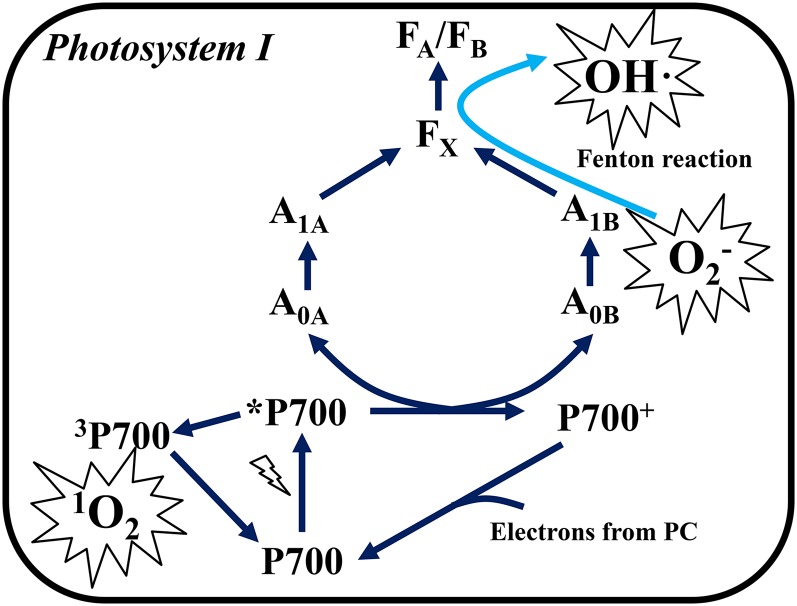Figure 6.
The scheme of ROS production and photoinhibition in PSI. When electron carriers are highly reduced in PSI, the production of O2− is stimulated at the A1 site (Kozuleva and Ivanov, 2010; Kozuleva et al., 2014). O2− either directly attacks the peripheral component, or is converted to OH· via the Fenton reaction between the iron-sulfur center in FX, FA, or FB in the diffusing process (Inoue et al., 1986; Sonoike et al., 1995; Takahashi and Asada, 1988). The limitation of electron transfer from P700 to downstream electron acceptors would suppress the charge separation between P700 and chlorophyll A0 (Shuvalov et al., 1986). Furthermore, the production of the P700 triplet-state (3P700) is initiated (Rutherford et al., 2012; Shuvalov et al., 1986). 3P700 reacts with O2 to produce singlet O2 (1O2). 1O2 attacks the peripheral component in PSI, and precedes PSI photoinhibition (Cazzaniga et al., 2012). These reactions proceed within the thylakoid membranes. Therefore, a decrease in P700 chlorophyll occurs, but protein degradation does not accompany PSI photoinhibition. Blue arrows indicate the energy transfer pathway in PSI, and the light-blue arrow indicates the diffusion of O2− in the thylakoid membranes (Takahashi and Asada, 1988).

